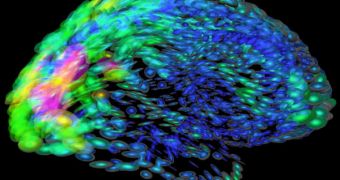Experts from the University of Washington have recently managed a significant breakthrough in treating paralysis, when they have created a set of circuity that allows a monkey with a temporal disability in a wrist to move it. The circuits and wires, controlled by a central unit, bypassed a nerve that had been sedated for the purpose of the experiment, so as to prevent electrical impulses from the brain reaching the wrist. The movements were entirely performed through the use of bionic electronics, NewScientist reports.
The team of experts that performed the promising experiment was led by scientist Eberhard Fetz, from the University of Washington (UW), in Seattle. The reason why this investigation, and others like it, bear so much importance in the field of medicine stands precisely in their ability to bypass an affected area and to restore function to the body segments below. Paralysis oftentimes occurs when nerves in the spinal cords, or in various members, are sectioned following an accident.
If this happens in the spinal cord, it can result in paralysis of the lower body, and the legs implicitly, forcing patients into wheelchairs for the rest of their lives. But, with the help of new generations of electronics, such an accident could be turned from a life sentence in the wheelchair into a temporary inconvenience, easily resolved with an implant. Electrods would be placed in various key regions of the brain, and would start collecting electrical impulses circling between neurons.
The central processing unit would then interpret these impulses, in an attempt to figure out what the brain is trying to do. After deciphering them, the relevant data would be sent back, preferably in a wireless fashion, to electrodes located at the end of neural fibers, below the spot where the original nerves have been sectioned. The electrodes would generate electrical impulses on specific fibers, which, in turn, would move the affected hands or feet. Similar devices are already in use to restore hearing to the deaf and vision to the blind, and hopes are high that the paralysis technology will become available within a few years.

 14 DAY TRIAL //
14 DAY TRIAL //